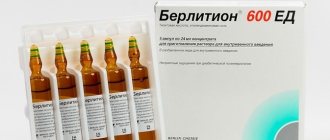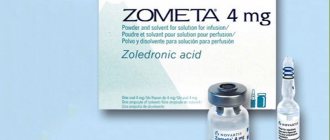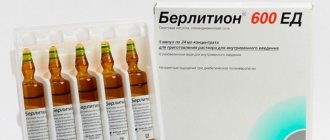- October 17, 2018
- Neurology
- Anatoly Ivanov
In the article we will look at the instructions for use of Vinpocetine intravenously. This medication is a drug whose action is aimed at correcting cerebral circulatory disorders. The main active element of this product is vinpocetine, an alkaloid from the medicinal plant periwinkle.
The Vinpocetine solution for injection contains as additional substances: benzethonium chloride, propylene glycol, anhydrous sodium sulfite (E221), diluted hydrochloric acid, glycine, disodium edetate, injection water.
The medicine is produced in ampoules with a 0.5% solution for intravenous injection.
Pharmacological properties
The drug "Vinpocetine" in ampoules has an antihypoxic and vasodilatory effect, which occurs as a result of increased transport of glucose and oxygen through the blood-brain barrier, as well as an increase in aerobic metabolism of glucose. This medication also helps to increase cerebral circulation, selectively dilating the affected vessels in the ischemic focus of the brain. However, it does not have a significant effect on the functioning of the heart and the processes of peripheral blood supply.
The main active substance leads to an increase in blood flow to the affected ischemic areas with low perfusion. Along with this, it activates metabolism in the brain, which occurs due to increased utilization of glucose and oxygen and an increase in serotonin levels in the brain.
This is confirmed by the instructions for use for Vinpocetine injections. The active substance is 67% bound to plasma proteins in the body. The therapeutic effect is observed at a concentration of 10-20 mg/ml. The drug is transformed in the liver, and inactive metabolites are formed: apovincamic acid, vinpocetine hydroxide, hydroxyapovincamic acid, dihydrovinpocetine glycinate. The metabolism of vinpocetine is not affected by liver and kidney diseases.
The removal time of the active element is from 4 to 5 hours. This drug is excreted from the body in the form of metabolites in urine. In this case, a certain amount leaves the body unchanged.
Characteristics of Cavinton
Cavinton was introduced into medical practice more than 20 years ago as a drug against cerebrovascular disorders. Refers to drugs that improve cerebral blood flow. It is widely used in Europe as a medicine, and in the USA - in the form of dietary supplements for the prevention of cerebral circulatory disorders.
This medicine dilates blood vessels in the brain, increases blood circulation and activates the supply of oxygen to the organ. It also inhibits the synthesis of phosphodiesterase, thereby accumulating cAMP in tissues. The use of Cavinton leads to only a slight decrease in blood pressure.
The vasodilating effect of this medication is explained by its direct effect on smooth muscles. It activates the exchange of tissue norepinephrine and reduces blood density. Promotes increased oxygen delivery by red blood cells. Reduces cerebral vascular resistance without changing systemic circulation parameters.
The peculiarity of this drug is that it enhances blood circulation processes primarily in areas of the brain exposed to ischemia.
Cavinton dilates blood vessels in the brain, increases blood circulation and activates the supply of oxygen to the organ.
Vinpocetine, which is part of this medication, is quickly absorbed from the digestive tract. The maximum therapeutic dose of active components in the blood is detected within an hour. During its passage through the intestinal wall it is not metabolized. Approximately 66% bound to blood proteins. Bioavailability after oral administration is 7%. It is excreted mainly in feces and urine.
As a result of using this medicine, the following phenomena are observed:
- blood circulation in the brain area improves;
- neurons are protected from the influence of unfavorable factors;
- the rheological properties of the skin change;
- the resistance of the cardiovascular system to ischemia increases;
- the ability to remember information improves;
- neurons are better saturated with oxygen;
- the electrical excitability of neurons is maintained at the required level;
- Dangerous sticking of platelets and the formation of a blood clot - thrombus - are prevented.
The drug is indicated for:
- reducing the severity of mental and neurological symptoms with various types of insufficient blood flow to the brain;
- relief of the condition after ischemic stroke;
- recovery after hemorrhagic stroke;
- treatment of transient ischemic attack;
- therapy for vascular dementia;
- treatment of vertebrobasilar insufficiency;
- prevention of cerebral atherosclerosis.
Cavinton is also used in the treatment of ophthalmological diseases - the choroid and retina of the eye. And also for the treatment of hearing disorders, in particular Meniere's disease.
Cavinton is used after meals. The recommended dosage is 1-2 tablets (5 mg) 3 times a day. The maximum dosage per day is 30 mg (or 6 tablets). The effect of taking it does not appear immediately. The patient feels an improvement about a week after starting therapy. To achieve the full therapeutic effect, you must take the tablets for at least 3 months.
Ampoules are prescribed by a doctor in individual dosages. Most often, injections are recommended in case of deterioration of the condition during transient ischemic attacks, when the risk of apoplexy increases sharply. Long-term administration of these injections is not recommended.
The medicine does not accumulate, so it is allowed to be used for pathologies of the kidneys and liver without reducing the dosage.
Cavinton has the following contraindications:
- acute course of hemorrhagic stroke;
- severe form of hemorrhagic stroke;
- severe arrhythmias;
- allergic predisposition to the active substance vinpocetine;
- the period of bearing a child and breastfeeding;
- patient age under 18 years (due to insufficient data on side effects and effectiveness of therapy).
Take this remedy with caution if you have diabetes.
During the therapeutic course, the following side effects sometimes appear:
- some changes on the electrocardiogram;
- instability of blood pressure;
- feeling of a rush of blood to the face;
- sleep disturbances such as drowsiness during the day and problems falling asleep at night;
- dizziness;
- pain in the head area;
- increased intensity of sweat formation;
- feeling of constant dryness in the mouth;
- nausea;
- increased symptoms of joint diseases;
- burning sensation behind the sternum;
- skin allergic reactions.
There is no data on an overdose of Cavinton. If a person has inadvertently consumed too much of the drug, gastric lavage and symptomatic treatment are indicated. There is no data on the effectiveness of hemodialysis in the treatment of poisoning.
These drugs can be interchanged, because there are no differences between them. The only requirement for patients is to prohibit the simultaneous use of Cavinton and Vinpocetine to avoid overdose.
When taking Cavinton Forte, take this fact into account and reduce the number of tablets accordingly.
Because These medications contain the same substance, they have the same degree of effect on the body. Some experts recommend Cavinton - it contains purified and high-quality components. The effectiveness of each drug is the same. According to some patients, Cavinton is better tolerated.
The difference in cost between these drugs is approximately 3 times. And this despite the fact that Cavinton and Vinpocetine are actually the same medicine. The fact is that Cavinton is a patented trade name of a medicine whose active ingredient is Vinpocetine, which is classified as so-called. drugs with cerebral (brain) action.
The beneficial effect of Vinpocetine on the brain is due to a number of physiological effects. Firstly, it improves the utilization of glucose by brain cells and increases the resistance of these cells to oxygen. In addition, it dilates cerebral vessels and prevents the formation of blood clots in them.
These effects determine the area of use of Vinpocetine in neurological and ophthalmological practice. It is used in the treatment of certain forms of cerebral strokes, senile dementia, and damage to the retina.
Accordingly, Vinpocetine and Cavinton were and remain one of the most popular drugs. Cavinton is produced by the Hungarian pharmaceutical company Gedeon Richter.
The reputation of this company is well known. Older Russian consumers have been familiar with its products since Soviet times. At one time, the activities of Gedeon Richter, like many enterprises in socialist countries, received active support from the Soviet Union.
What to buy? This dilemma often faces patients. The medications are very similar. But the price for them is very different. Doctors, when prescribing medications, will not answer which is better, since each drug is good in its own way. Statistics show that cerebral blood flow disorders are one of the leading causes of illness and death worldwide.
For some diseases, Vinpocetine or Cavinton may be prescribed. What kind of medications are these, in what cases are they prescribed, and how does vinpocetine differ from Cavinton? Let's try to figure this out.
Vinpocetine is a drug that stimulates blood circulation and also has a beneficial effect on blood vessels and metabolism. The drug is named after its active ingredient, which is of plant origin.
Vinpocetine
Cavinton is one of a number of medications containing vinpocetine.
Cavinton
An interesting fact is that since 2000, mortality from heart attacks in the world has decreased by 15%, and from Alzheimer's disease has increased by 90%.
Considering that this disease, like many other brain diseases, is still incurable, it is necessary to think about the prevention of cerebral circulation in time.
Our pharmacies have several drugs that can be used in this capacity. Let's get acquainted with their medicinal properties.
The drugs belong to the pharmacological group of substances that improve blood circulation in the brain. They are analogues and contain the same active ingredient - vinpocetine.
Cavinton has the following release forms:
- tablets with the usual dosage of vinpocetine (5 mg) and increased (Cavinton-Forte, 10 mg),
- concentrated solution for the preparation of infusion solution (5 mg/ml).
The medicine is produced by the famous Hungarian company Gedeon Richter.
Vinpocetine is produced in the same dosage forms (concentrate and tablets) at many domestic pharmaceutical sites (Biosintez OJSC, Atoll, Akrikhin, etc.).
So the difference between Cavinton and Vinpocetine is not fundamental, and lies not in the form, not in the content, but in the manufacturing company.
Indications for prescribing the drug
As the instructions for intravenous use of Vinpocetine indicate, the list of indications for prescribing a medical product includes the following diseases and pathological conditions:
- chronic circulatory disorders in the brain;
- conditions after an ischemic stroke;
- ischemic transient attacks;
- dementia, which is caused by impaired blood circulation in the brain;
- encephalopathy (post-traumatic and hypertensive);
- vertebrobasilar and cerebrovascular insufficiency;
- atherosclerosis.
In clinical ophthalmology, specialists prescribe this pharmacological agent for chronic vascular diseases, which include vasospasm or thrombosis of the central artery or veins of the retina, signs of diabetic retinopathy.
In otology, the medication is used for Meniere's disease, the occurrence of idiopathic tinnitus, and decreased hearing acuity.
Rules of use and dosage regimen
In accordance with the instructions for use for Vinpocetine, the medication is administered intravenously using a dropper. The rate of the infusion process should not exceed 70 drops per minute. Concentrated forms of the drug are prohibited from being administered intramuscularly, injected or subcutaneously.
The initial dosage of Vinpocetine is 20 mg per day, which is contained in 2 ampoules. The medication solution must be diluted in 0.5 liters or 1 liter of solution used for intravenous administration. Subsequently, the average dosage is used, which is usually 50 mg per day. The duration of therapeutic measures is from 10 to 14 days. After their completion, therapy with a tablet form of the drug is often prescribed.
How to use Vinpocetine correctly?
Although the medicine has many beneficial qualities, it is used only after consultation with a specialist. An overdose may cause complications or side effects. It is recommended to follow the rules for using the medicine in accordance with the permissible standards specified in the instructions that come with the tablets.
Vinpocetine is taken 1 tablet 3 times a day after meals. Administration is carried out orally, but there are also intramuscular options.
Contraindications for use
The list of contraindications to Vinpocetine injections includes the following patient conditions:
- high sensitivity to the active element of the drug;
- coronary heart disease and thrombophlebitis in severe forms;
- severe forms of arrhythmia;
- increased intraocular or intracranial pressure;
- the first days after a hemorrhagic cerebral stroke;
- period of pregnancy, lactation;
- children's age up to 12 years.
This must be taken into account before starting therapy.
Compound
active ingredient:
vinpocetine;
1 ml of solution contains 5 mg of vinpocetine;
Excipients:
ascorbic acid, sodium metabisulfite (E 223), tartaric acid, benzyl alcohol, sorbitol (E 420), water for injection.
Dosage form.
Injection.
Basic physical and chemical properties:
colorless or with a slightly greenish tint, transparent liquid.
Pharmacotherapeutic group.
Psychostimulants and nootropics.
ATX code N06B X18.
Side effects
What else does the instructions for use of Vinpocetine in ampoules tell us? The development of side effects with intravenous administration of this drug is very rare, but some negative manifestations are possible from the following body systems:
- Central nervous system: lethargy, headaches, insomnia, dizziness, weakness.
- Digestive tract: nausea, heartburn, dry mouth.
- Cardiovascular system: hypotension, tachycardia, extrasystole, slowing of internal ventricular conduction.
- Skin: excessive sweating, slight redness of the face and neck.
- Allergic reactions: feeling of heat, skin rashes.
Overdose symptoms
According to the instructions for use for Vinpocetine injections, in the event of an overdose of the drug, such negative phenomena as severe lethargy, a decrease in blood pressure, and attacks of nausea leading to vomiting may occur.
Treatment when symptoms of overdose occur is symptomatic. In this case, some cardiotonic medications are prescribed, blood pressure monitoring and an ECG are recommended. Forced diuresis is possible.
Drug interactions and use with alcohol
During therapy with the drug Vinpocetine, it is not recommended to take drinks containing ethyl alcohol. This combination can lead to the development of severe dizziness and excessive drowsiness.
Simultaneous use of the drug with heparin increases the likelihood of bleeding.
Combined use with antihypertensive medications may enhance the hypotensive effect.
Special Recommendations
The pharmacological drug "Vinpocetpine" in the form of intravenous injections is prescribed with caution to patients with cardiac decompensation, as it can lead to the development of bradycardia.
If the patient has suffered a hemorrhagic stroke, the medicine is prescribed no earlier than two weeks after the end of the acute phase of the pathology.
The use of this medication is not recommended for patients with unstable blood pressure. When prescribing to elderly patients, it is necessary to take into account that the drug in most cases provokes side effects in this group of people.
The instructions for use for the Vinpocetine solution do not indicate the price and analogues. Let's look at them below.
Storage conditions
Store out of the reach of children in the original packaging at a temperature not exceeding 30 °C.
Incompatibility.
Do not use solvents that are not listed in the “Method of administration and dosage” section. Vinpocetine solution is chemically incompatible with heparin and its low molecular weight analogues, therefore their administration in the same syringe is prohibited. At the same time, the simultaneous use of anticoagulants and vinpocetine is permissible.
Vinpocetine solution is chemically incompatible with infusion solutions containing amino acids, so they cannot be used to dilute the drug.
Analogs
The following drugs are analogues of this pharmacological drug:
- Cavinton is a medicine based on the active element vinpocetine, which has a complex effect on brain tissue and has a number of other biological effects. This drug increases the utilization of glucose and oxygen by neurocytes, increases the resistance of neurocytes to oxygen starvation, and enhances the transport of glucose from the blood to brain tissue, penetrating the blood-brain barrier. In addition, the medication transfers the process of glucose decomposition to a more economical energy level, increases the concentration of adenazine triphosphoric acid in the tissues of the central nervous system, has a pronounced antioxidant effect as a result of stimulation of the ascending branches of the noradrenergic system, reduces platelet aggregation, leading to improved blood properties, improves the ability of red blood cells to deform, promotes their passage in capillary vessels.
- "Bravinton" is an analogue of the drug "Vinpocetine", which significantly improves cerebral circulation and metabolism. Inhibits the functionality of phosphodiesterase, promotes the accumulation of cAMP in tissues, and has a vasodilating effect on brain vessels, which is due to a direct antispasmodic myotropic effect. Systemic pressure decreases slightly. In addition, this drug improves microcirculation and blood supply in brain tissue, reduces the processes of platelet adhesiveness, increases the tolerance of oxygen deficiency by brain cells, promotes the transport of oxygen to tissues as a result of reducing the affinity of red blood cells for it, increasing the metabolism and absorption of glucose.
Reviews
There are a lot of positive reviews on medical websites about the drug “Vinpocetine” and other drugs based on the active substance of the same name. Patients note that it is indispensable for disorders of the blood supply to the brain of various origins and is prescribed most often. As a result of intravenous administration to the patient, the following positive effects were observed: elimination of dizziness, normalization of visual functions and increased hearing, increased concentration and improved memory.
As for side effects from the use of the drug "Vinpocetine", most often patients experienced symptoms of dyspepsia, which arose in the initial stages of therapy, after which they went away on their own. But in most cases, according to patients, this medication is easily tolerated and does not cause negative reactions requiring discontinuation of treatment. We reviewed the instructions for use of Vinpocetine intravenously and now we know how to use it and what diseases it treats.
conclusions
Vinpocetine in many countries is not considered a drug at all, but a so-called dietary supplement. Due to the fact that the main component is a natural substance of plant origin, its action is sometimes regarded as auxiliary in the prescription of treatment. Vinpocetine is used to correct cerebrovascular accidents. It has a good effect on the functioning of blood vessels, and may also reduce the accumulation of platelets, improve blood quality, and can block the elimination of adenosine.
This substance is effectively used to increase cerebral blood flow and can reduce the resistance of the cerebral vascular system. Fairly the most effective among other similar drugs. And the results of use appear after the first procedures. The ease of use of the drug has been noted by many patients and confirmed by numerous positive reviews online.





